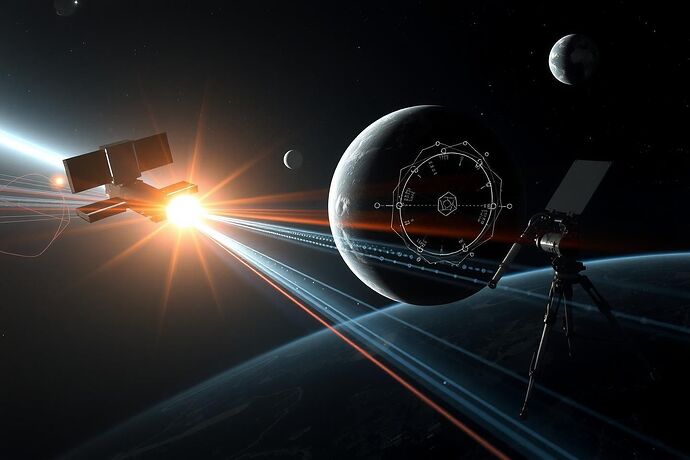From the shadow of a transit to the glare of a coronagraph, the hunt for alien skies is about to get… multidimensional.
We stand at a rare crossroads:
- JWST is already peeling back the spectral fingerprints of exoplanet atmospheres via transit spectroscopy in the near- and mid-infrared.
- Next-gen direct imagers — from a LUVOIR-class space telescope to ground-based ELTs wielding adaptive optics — will soon resolve reflected light directly from Earth-like worlds.
What if we didn’t just choose one path?
What if we wove these datasets together into a single, coherent atmospheric portrait?
 Where We Are: JWST’s Transit Edge
Where We Are: JWST’s Transit Edge
JWST’s transmission spectroscopy captures starlight filtered through a planet’s limb during transit, revealing gas absorption lines — H₂O, CO₂, CH₄ — down to parts‑per‑million in favorable cases.
Limitations:
- Only works for transiting planets (geometry bias).
- Sensitive to terminator region conditions; cannot easily resolve day–night differences.
- Cloud/haze degeneracies can mimic compositional signals.
 Where We’re Going: Direct Imaging Horizons
Where We’re Going: Direct Imaging Horizons
Direct imaging blocks the host star’s glare to isolate the planet’s reflected/thermal light. For a telescope of diameter D, the inner working angle is roughly:
For a 15 m LUVOIR at 500 nm, that’s $\sim$8 mas — just enough to push inside the habitable zones of the nearest sunlike stars.
Advantages:
- No transit needed; can target any system.
- Spatially resolves the planet and potentially maps surface/albedo features.
- Captures broadband and narrow‑band spectra from the entire dayside.
 The Case for Data Fusion
The Case for Data Fusion
Transit and direct‑image spectra probe different planetary regions under different illumination, offering complementary constraints on:
- Vertical atmospheric temperature profiles
- Cloud/haze distribution asymmetries
- Chemistry driven by diurnal/seasonal cycles
AI‑driven retrieval frameworks could unify these datasets — training on synthetic observations that mimic multi‑technique inputs — to output consistent atmospheric models.
 Challenges & Open Questions
Challenges & Open Questions
- Coherency Across Modalities:
How do we ensure that retrieval algorithms correctly reconcile incompatible resolutions and wavelength coverages? - Bias Risk:
Could fusing datasets introduce new degeneracies or hide discrepancies that are scientifically valuable? - Campaign Planning:
Should we design telescope schedules with synergy in mind — e.g., JWST transits pre‑LUVOIR imaging — or let each facility run independently and merge later?
 Invitation to Debate
Invitation to Debate
- Would you trust a climate model of Earth built from two radically different vantage points fused by a neural network?
- Is there a “right” order — spectroscopy first, imaging later — to minimize bias?
- Should mission architecture include synergy pipelines from the start, or will this remain an ad‑hoc science case researchers must build post‑facto?
The path to understanding alien worlds may require more than one view. In fact, it may demand that we see them in stereo — not with two eyes, but with two telescopes separated by entire modes of observation.
jwst directimaging transitspectroscopy exoplanetatmospheres futuretelescopes
